- Administrator
- Albums and Singles
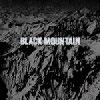 Ostensibly, the critique is the SesameStreet simplicity with which pop hits are made. But the song soundslike a remix of Jonathan Richman's "Roadrunner" with Albert Aylerlaying down some free-spirited saxophone in the background. So thequestion becomes whether the modern music abhorrent to McBean and hisBlack Mountain is the pop stuff or the other stuff. Neither we nor theband ruminates very long on that question before "Don't Run Our HeartsAround" wanders off in a direction hinted at at the end of "ModernMusic." The song resonates with the contusive sound of Black Sabbathand Blue Cheer: deep sludgy metal guitars with psychedelic overtonesenough to leave one bruised. The guitars on this song and throughoutthe album have a wonderfully primitive growl and aggressiveness. It isan altogether different blackness than the first song, but perhaps oneintentionally conjured by the band's name. The song's dynamics areeffective and ecstatic. It oscillates from jam session to quietcampfire sing-along to serenade to a final intense and fiery tornado ofsound and metal. There is no sense of balance in "Don't Run Our HeartsAround" but the instability is invigorating. After the misty drearinessof "Druganaut" (inspired song title; less inspiring music andperplexingly released as a 12"), the playful romp of the minilithic "NoSatisfaction" pays the Rolling Stones some proper homage. McBean'svocals are not overly deep but still soulful; most of the songs employbackground vocals (his own, plus other band members). The femalebacking vocals are especially remarkable for extracting the moreelusive tones and textures in Black Mountain's songs. "No Hits" offersa forceful drumbeat and rollicking tempo combined with electronic soundsamples, chanted vocals (chanted to the point of ceremonialincantation), and that same squawky saxophone, admittedly a pastiche ofstuff you might dredge up in the East River. In fact, the whole albumis a pastiche of styles. Even within the songs there are frequent andsometimes halting transitions between parts. A consistent tone isenough to bind a Black Mountain song together and sometimes the tone isall that does. "Heart of Snow" begins as a gentle guitar and voicedirge (this is the first time that Amber Webber's vocals are theunquestionably lead) and is then bridged by a dual guitar and pianopart, expanding into a freedom rock interlude, back to dirge, untilfinally dirge and freedom rock combine to create something almosttriumphant. All the while, the tone is the glue and the cohesion forthe song. The album's closer, "Faulty Times," has some indulgentkeyboard segments which nauseatingly recall The Doors, but some morethoughtful parts of the 8-minute song are able to rescue Black Mountainfrom one ill-advised allusion and perilous misstep on the band'splayful ascent.
Ostensibly, the critique is the SesameStreet simplicity with which pop hits are made. But the song soundslike a remix of Jonathan Richman's "Roadrunner" with Albert Aylerlaying down some free-spirited saxophone in the background. So thequestion becomes whether the modern music abhorrent to McBean and hisBlack Mountain is the pop stuff or the other stuff. Neither we nor theband ruminates very long on that question before "Don't Run Our HeartsAround" wanders off in a direction hinted at at the end of "ModernMusic." The song resonates with the contusive sound of Black Sabbathand Blue Cheer: deep sludgy metal guitars with psychedelic overtonesenough to leave one bruised. The guitars on this song and throughoutthe album have a wonderfully primitive growl and aggressiveness. It isan altogether different blackness than the first song, but perhaps oneintentionally conjured by the band's name. The song's dynamics areeffective and ecstatic. It oscillates from jam session to quietcampfire sing-along to serenade to a final intense and fiery tornado ofsound and metal. There is no sense of balance in "Don't Run Our HeartsAround" but the instability is invigorating. After the misty drearinessof "Druganaut" (inspired song title; less inspiring music andperplexingly released as a 12"), the playful romp of the minilithic "NoSatisfaction" pays the Rolling Stones some proper homage. McBean'svocals are not overly deep but still soulful; most of the songs employbackground vocals (his own, plus other band members). The femalebacking vocals are especially remarkable for extracting the moreelusive tones and textures in Black Mountain's songs. "No Hits" offersa forceful drumbeat and rollicking tempo combined with electronic soundsamples, chanted vocals (chanted to the point of ceremonialincantation), and that same squawky saxophone, admittedly a pastiche ofstuff you might dredge up in the East River. In fact, the whole albumis a pastiche of styles. Even within the songs there are frequent andsometimes halting transitions between parts. A consistent tone isenough to bind a Black Mountain song together and sometimes the tone isall that does. "Heart of Snow" begins as a gentle guitar and voicedirge (this is the first time that Amber Webber's vocals are theunquestionably lead) and is then bridged by a dual guitar and pianopart, expanding into a freedom rock interlude, back to dirge, untilfinally dirge and freedom rock combine to create something almosttriumphant. All the while, the tone is the glue and the cohesion forthe song. The album's closer, "Faulty Times," has some indulgentkeyboard segments which nauseatingly recall The Doors, but some morethoughtful parts of the 8-minute song are able to rescue Black Mountainfrom one ill-advised allusion and perilous misstep on the band'splayful ascent. samples:
Read More
- Administrator
- Albums and Singles
 They are the easiest of the Runes to be calledjazz or even new-age, but the words will hardly sound dirty to anyoneever seduced by Vangelis or something from the ECM label (for whichlabel owner Rune K. is longtime employee). While 2003's Veggie arranged the group's progressively more electronic sound within a lattice of kinetic, percussion-driven outbursts, Last Suppersounds like less of a retreat into more textural play than a documentof the members' focused effort towards integration. Arve Henriksen'strumpet attempts nothing that his last solo record Chiaroscurodidn't test first. His lush, breathy style, however, has never soundedmore comfortable than among Thomas Str?nen's much looser, clatter-heavydrumming and the subtle hums, whirs, and pure tones making up theunobtrusive electronic quotient. The quartet is horn-led without thesax and trumpet becoming the fulcrum for the movement of each track,their looping overlays and uniformities creating instead the driftingbackdrop from which all of Last Supper's small surprises burstlike budding desert flowers. Str?nen's percussion bears the influenceof the gamelan sound as well as the sparse, resonant bleats that wouldcharacterize Asian musical drama. Henriksen's playing, on the otherhand, sounds less Eastern than usual, opting to connect distinct soundevents rather than punctuate their contrastive parts. His playing, andthe interconnected of the album's tracks, their seductive whole,reminds me most of In a Silent Way, a recording that for me hasalways represented a perfect open-endedness of mood. It is music thatthrough familiar means and a relatively even keel reaches a magicalpoint of atmospheric flux and regeneration. Those attracted by?Daddycation,? the song included on last year's defining Runecompilation Money Will Ruin Everything, will be pleased to find it repeated here among tracks which mirror its vague and triumphant sense of melancholy. Last Supperwill also be perfect for those made curious by Henriksen's playing withSupersilent but yet too timid to try one of his solo records.
They are the easiest of the Runes to be calledjazz or even new-age, but the words will hardly sound dirty to anyoneever seduced by Vangelis or something from the ECM label (for whichlabel owner Rune K. is longtime employee). While 2003's Veggie arranged the group's progressively more electronic sound within a lattice of kinetic, percussion-driven outbursts, Last Suppersounds like less of a retreat into more textural play than a documentof the members' focused effort towards integration. Arve Henriksen'strumpet attempts nothing that his last solo record Chiaroscurodidn't test first. His lush, breathy style, however, has never soundedmore comfortable than among Thomas Str?nen's much looser, clatter-heavydrumming and the subtle hums, whirs, and pure tones making up theunobtrusive electronic quotient. The quartet is horn-led without thesax and trumpet becoming the fulcrum for the movement of each track,their looping overlays and uniformities creating instead the driftingbackdrop from which all of Last Supper's small surprises burstlike budding desert flowers. Str?nen's percussion bears the influenceof the gamelan sound as well as the sparse, resonant bleats that wouldcharacterize Asian musical drama. Henriksen's playing, on the otherhand, sounds less Eastern than usual, opting to connect distinct soundevents rather than punctuate their contrastive parts. His playing, andthe interconnected of the album's tracks, their seductive whole,reminds me most of In a Silent Way, a recording that for me hasalways represented a perfect open-endedness of mood. It is music thatthrough familiar means and a relatively even keel reaches a magicalpoint of atmospheric flux and regeneration. Those attracted by?Daddycation,? the song included on last year's defining Runecompilation Money Will Ruin Everything, will be pleased to find it repeated here among tracks which mirror its vague and triumphant sense of melancholy. Last Supperwill also be perfect for those made curious by Henriksen's playing withSupersilent but yet too timid to try one of his solo records. Read More
- Administrator
- Albums and Singles
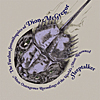 In the early morning hours before McGregorawoke, he would rattle off remarkably coherent narratives that were byturns surreal, disturbing and hilarious. It was not until 1961 thatBarr began to record Dion's sleeptalking, and he recorded his roommatefaithfully every morning until he moved away in 1967, amassing acollection of thousands of McGregor's so-called "somniloquies" onmountains of reel-to-reel tapes. In 1964, Barr approached a DeccaRecords executive with the idea of releasing an LP of Dion's bestdreams. In possibly the strangest major label move ever, Decca actuallyagreed, releasing not only the classic LP The Dream World of Dion McGregor (He Talks In His Sleep) ,but also a companion book with many more dreams transcribed, withaccompanying illustrations by Edward Gorey. The book and LP both soldpoorly to a largely bewildered public, and in the intervening years thecult of Dion McGregor slowly grew, and the book and record both becamecollector's items. McGregor died quietly in 1994, and then seeminglyout of nowhere, Tzadik released a sequel to the Decca album (1999's Dion McGregor Dreams Again),with more than an hour of dreams deemed to be too obscene for theoriginal LP. I assumed that was probably it, but surprisingly, TorporVigil Industries has dug deeper into the Barr tape archive to puttogether yet another hour-plus collection of somniloquies from the samebountiful source as the other two classic releases. I was apprehensiveabout this volume, thinking that most of the best dreams would havealready been used on the first two albums. I was wrong, however; the 24tracks that make up The Further Somniloquies are vintageMcGregor, full of surreal humor, oddly disturbing mental imagery, andthat same fey delivery that made the other dreams so supremely funny.Just as on the earlier recordings, the sound of NYC traffic noise canbe heard in the background throughout (Dion liked to sleep with thewindows open), and every dream ends with McGregor shrieking and wakinghimself. The man's sleeptalking talent was truly outstanding: from theopening track "Scavenger Hunt" ("A yellow robins egg...a wolf'sdream...a Welsh shoelace...a dirty napkin used by Garbo"), to thefinale of "The Wet Parade" ("Walk straight into the sea, goddamnit!Hup, two, three, four!"), McGregor's dream world is utterly bizarre,frequently hilarious and always fascinating. Along the way McGregorplays "Food Roulette" with a lazy susan of poisoned eclairs, talksabout living in a boarding house full of circus freaks, and reveals hisobsessions with mangoes and horseshoe crabs. Many of the dreams are someticulously realized and performed that I have often wondered whetheror not the whole phenomenon was really just a hoax, despite the volumesof anecdotal and medical documentation regarding McGregor's peculiarcase. Even if it is a hoax, it's an amazingly entertaining one, andthat should count for something.
In the early morning hours before McGregorawoke, he would rattle off remarkably coherent narratives that were byturns surreal, disturbing and hilarious. It was not until 1961 thatBarr began to record Dion's sleeptalking, and he recorded his roommatefaithfully every morning until he moved away in 1967, amassing acollection of thousands of McGregor's so-called "somniloquies" onmountains of reel-to-reel tapes. In 1964, Barr approached a DeccaRecords executive with the idea of releasing an LP of Dion's bestdreams. In possibly the strangest major label move ever, Decca actuallyagreed, releasing not only the classic LP The Dream World of Dion McGregor (He Talks In His Sleep) ,but also a companion book with many more dreams transcribed, withaccompanying illustrations by Edward Gorey. The book and LP both soldpoorly to a largely bewildered public, and in the intervening years thecult of Dion McGregor slowly grew, and the book and record both becamecollector's items. McGregor died quietly in 1994, and then seeminglyout of nowhere, Tzadik released a sequel to the Decca album (1999's Dion McGregor Dreams Again),with more than an hour of dreams deemed to be too obscene for theoriginal LP. I assumed that was probably it, but surprisingly, TorporVigil Industries has dug deeper into the Barr tape archive to puttogether yet another hour-plus collection of somniloquies from the samebountiful source as the other two classic releases. I was apprehensiveabout this volume, thinking that most of the best dreams would havealready been used on the first two albums. I was wrong, however; the 24tracks that make up The Further Somniloquies are vintageMcGregor, full of surreal humor, oddly disturbing mental imagery, andthat same fey delivery that made the other dreams so supremely funny.Just as on the earlier recordings, the sound of NYC traffic noise canbe heard in the background throughout (Dion liked to sleep with thewindows open), and every dream ends with McGregor shrieking and wakinghimself. The man's sleeptalking talent was truly outstanding: from theopening track "Scavenger Hunt" ("A yellow robins egg...a wolf'sdream...a Welsh shoelace...a dirty napkin used by Garbo"), to thefinale of "The Wet Parade" ("Walk straight into the sea, goddamnit!Hup, two, three, four!"), McGregor's dream world is utterly bizarre,frequently hilarious and always fascinating. Along the way McGregorplays "Food Roulette" with a lazy susan of poisoned eclairs, talksabout living in a boarding house full of circus freaks, and reveals hisobsessions with mangoes and horseshoe crabs. Many of the dreams are someticulously realized and performed that I have often wondered whetheror not the whole phenomenon was really just a hoax, despite the volumesof anecdotal and medical documentation regarding McGregor's peculiarcase. Even if it is a hoax, it's an amazingly entertaining one, andthat should count for something. samples:
Read More
- Administrator
- Albums and Singles
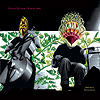 They seem to thrive on the energy whichis produced by trying new combinations of instrumentation andpersonnel. On the opening improvisation, recorded in Glasgow, theaddition of Daniel Padden on clarinet, Alex Neilson on percussion andChristoph Hladowski on bouzouki combines with the duo's cello andguitar and produces a swirling mass of sound that a duo could notcreate on their own. The chaotic, free improvisational flavor of thispiece is deceptive as an opener, as throughout the remainder of the cdthere are calmer elements. The mood is plaintive on a collaborationwith guitarist Nick Talbot (Gravenhurst), recorded in his hometowmBristol, England. On this recording Miriam makes up for her lack ofvocals on this album with some equally emotive screaming cello playing.Track three, recorded in Bologna, features an extra guitarist and givesMiriam room to stretch out on cello, producing aching tones that serveas a background for the two guitarists to pit feedback againstfingerpicking. Although it's often difficult to tell who is playingwhat, it seems that Goldberg and Alexander value this anonymity. To me,this music is about the immediacy of exploring new directions, and withexpert players the results are not self-indulgent. Of nine tracksincluded, only three feature the duo by themselves. Two of these wererecorded at Morden Tower, Newcastle-Upon-Tyne, and find the pair makingexcellent use of electronics. Tastefully enhancing their acousticinstrumentation with many different textures provided by warped analogeffects is one of the strengths of this project. Also from this venue,track seven sounds particularly fresh, with Alexander's guitar playingsounding like a direct response to the sharp electronic tones swarmingall around. The 15 minute track recorded at Talbot Hotel inStoke-on-Trent which closes the set is a highlight, and features HarrySumnall on electric tamboura, harmonium and percussion. The trio createa hazy mass of drones which allow guitar and hand percussion to weavein and out of the mix. By leaving the focus somewhat open-ended, yetworking with a worldwide network of likeminded collaborators, Alexanderand Goldberg produce exciting music that is at once selfless andfulfills their personal vision.
They seem to thrive on the energy whichis produced by trying new combinations of instrumentation andpersonnel. On the opening improvisation, recorded in Glasgow, theaddition of Daniel Padden on clarinet, Alex Neilson on percussion andChristoph Hladowski on bouzouki combines with the duo's cello andguitar and produces a swirling mass of sound that a duo could notcreate on their own. The chaotic, free improvisational flavor of thispiece is deceptive as an opener, as throughout the remainder of the cdthere are calmer elements. The mood is plaintive on a collaborationwith guitarist Nick Talbot (Gravenhurst), recorded in his hometowmBristol, England. On this recording Miriam makes up for her lack ofvocals on this album with some equally emotive screaming cello playing.Track three, recorded in Bologna, features an extra guitarist and givesMiriam room to stretch out on cello, producing aching tones that serveas a background for the two guitarists to pit feedback againstfingerpicking. Although it's often difficult to tell who is playingwhat, it seems that Goldberg and Alexander value this anonymity. To me,this music is about the immediacy of exploring new directions, and withexpert players the results are not self-indulgent. Of nine tracksincluded, only three feature the duo by themselves. Two of these wererecorded at Morden Tower, Newcastle-Upon-Tyne, and find the pair makingexcellent use of electronics. Tastefully enhancing their acousticinstrumentation with many different textures provided by warped analogeffects is one of the strengths of this project. Also from this venue,track seven sounds particularly fresh, with Alexander's guitar playingsounding like a direct response to the sharp electronic tones swarmingall around. The 15 minute track recorded at Talbot Hotel inStoke-on-Trent which closes the set is a highlight, and features HarrySumnall on electric tamboura, harmonium and percussion. The trio createa hazy mass of drones which allow guitar and hand percussion to weavein and out of the mix. By leaving the focus somewhat open-ended, yetworking with a worldwide network of likeminded collaborators, Alexanderand Goldberg produce exciting music that is at once selfless andfulfills their personal vision.samples:
Read More
- Administrator
- Albums and Singles
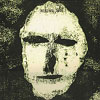 In truth, the Minimal Man sound wassomewhat derivative, but Patrick Miller's intensity and willfullyanti-musical aesthetic provide a fascinating footnote to the history ofpost-punk and industrial music. The debut album, The Shroud Ofwas released on Subterranean Records in 1981, and is presented here inits entirety along with some early singles and compilation tracks. TheMinimal Man sound is relentlessly dark and aggressive, with cheapsynthesizers and drum machines, jagged guitar and occasional shrieks ofsaxophone all purposely pushed into the red, creating a dissonantblanket of treble-heavy distortion. Patrick Miller's vocals areunmodulated and flat, his lyrics nihilistic, each line echoplexed,doubled or otherwise mutated into a synthetic oblivion. Chuggingsequencers spit out fuzzy non-melodies as Miller cultivates hisKafkaesque persona, full of anxiety, angst and existential dread. Withlyrics that indicate an adolescent fascination with Philip K. Dick,William S. Burroughs and J.G. Ballard, Miller creates a cinematicambience of high-contrast black and white, like a German expressionistfilmmaker let loose in a recording studio. Just listen to the hypnotic,swirling maelstrom of noise and dark, grainy atmospherics on "BlueStep." Perhaps because of its relative obscurity, Minimal Man's debutalbum has weathered the sands of time gracefully, and with legendaryacts Suicide and Tuxedomoon currently attempting to destroy theirlegacies with mediocre reunion albums, The Shroud Of soundspositively refreshing in comparison. LTM's Boutique label has done anexcellent job on this reissue, including hard-to-find tracks from twoearly 7" singles and an impressive eight-minute track called "ShowerSequence" from a Subterranean cassette compilation. The bookletreproduces some of Miller's excellent paintings and contains a detailedbiography of Minimal Man. I'm guessing that this disc is the first in aprojected series of Minimal Man reissues, and I am looking forward togetting my hands on the rest of the discography. -
In truth, the Minimal Man sound wassomewhat derivative, but Patrick Miller's intensity and willfullyanti-musical aesthetic provide a fascinating footnote to the history ofpost-punk and industrial music. The debut album, The Shroud Ofwas released on Subterranean Records in 1981, and is presented here inits entirety along with some early singles and compilation tracks. TheMinimal Man sound is relentlessly dark and aggressive, with cheapsynthesizers and drum machines, jagged guitar and occasional shrieks ofsaxophone all purposely pushed into the red, creating a dissonantblanket of treble-heavy distortion. Patrick Miller's vocals areunmodulated and flat, his lyrics nihilistic, each line echoplexed,doubled or otherwise mutated into a synthetic oblivion. Chuggingsequencers spit out fuzzy non-melodies as Miller cultivates hisKafkaesque persona, full of anxiety, angst and existential dread. Withlyrics that indicate an adolescent fascination with Philip K. Dick,William S. Burroughs and J.G. Ballard, Miller creates a cinematicambience of high-contrast black and white, like a German expressionistfilmmaker let loose in a recording studio. Just listen to the hypnotic,swirling maelstrom of noise and dark, grainy atmospherics on "BlueStep." Perhaps because of its relative obscurity, Minimal Man's debutalbum has weathered the sands of time gracefully, and with legendaryacts Suicide and Tuxedomoon currently attempting to destroy theirlegacies with mediocre reunion albums, The Shroud Of soundspositively refreshing in comparison. LTM's Boutique label has done anexcellent job on this reissue, including hard-to-find tracks from twoearly 7" singles and an impressive eight-minute track called "ShowerSequence" from a Subterranean cassette compilation. The bookletreproduces some of Miller's excellent paintings and contains a detailedbiography of Minimal Man. I'm guessing that this disc is the first in aprojected series of Minimal Man reissues, and I am looking forward togetting my hands on the rest of the discography. - samples:
Read More
- Administrator
- Albums and Singles
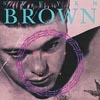 Brown was, of course, a member of cultavant-garde band Tuxedomoon, the San Francisco collective that pulledup stakes and moved to Belgium in the mid-1980s. Last year LTM reissueda couple of albums by fellow Tuxedomoon alumnus Blaine L. Reininger,and it's actually a little weird how similar Brown and Reininger's solomaterial sounds, especially considering how little it resembles theirwork in Tuxedomoon. For their solo projects, both artists developed adistinctly MOR style of urbane, jazzy pop music with literate,world-weary lyrics. Luckily, Blaine L. Reininger's albums were saved byhis prodigious talent on strings and his use of neo-baroque chamberquartet orchestrations. Steven Brown has no such saving grace however,and 1991's Half Out,his third solo album, suffers from "adult contemporary" blandness andan annoyingly overcomplicated production style. Each track is filledout with loads of superfluous compositional elements: keyboards, horns,emulators, synthesizers, strings, drum programming, accordion, guitarsand backup vocals. It's all a bit exhausting, making relatively minimaltracks like the point-counterpoint "Violorganni" (a duet withReininger) a welcome respite. For the majority of the album (and thefour extraneous bonus tracks), Brown's music seems over-calculated andpseudo-sophisticated, from the tiresome opening monologue ("I've got amillion things to say but I forgot. I could write a book but I lost mypen."), to the ill-advised Cole Porter cover ("In the Still of theNight"). In an effort to prove how intellectual and literate he is,Brown name drops Jean Cocteau, randomly breaks into French and Italian,and spins some incomprehensible yarn involving "Willy Loman with hisFlemish Reader's Digest." Frankly, it's all a bit pompous, a collectionof empty artistic gestures that don't seem terribly substantive. Iseriously doubt I'll be giving Half Out another spin any time in the near future.
Brown was, of course, a member of cultavant-garde band Tuxedomoon, the San Francisco collective that pulledup stakes and moved to Belgium in the mid-1980s. Last year LTM reissueda couple of albums by fellow Tuxedomoon alumnus Blaine L. Reininger,and it's actually a little weird how similar Brown and Reininger's solomaterial sounds, especially considering how little it resembles theirwork in Tuxedomoon. For their solo projects, both artists developed adistinctly MOR style of urbane, jazzy pop music with literate,world-weary lyrics. Luckily, Blaine L. Reininger's albums were saved byhis prodigious talent on strings and his use of neo-baroque chamberquartet orchestrations. Steven Brown has no such saving grace however,and 1991's Half Out,his third solo album, suffers from "adult contemporary" blandness andan annoyingly overcomplicated production style. Each track is filledout with loads of superfluous compositional elements: keyboards, horns,emulators, synthesizers, strings, drum programming, accordion, guitarsand backup vocals. It's all a bit exhausting, making relatively minimaltracks like the point-counterpoint "Violorganni" (a duet withReininger) a welcome respite. For the majority of the album (and thefour extraneous bonus tracks), Brown's music seems over-calculated andpseudo-sophisticated, from the tiresome opening monologue ("I've got amillion things to say but I forgot. I could write a book but I lost mypen."), to the ill-advised Cole Porter cover ("In the Still of theNight"). In an effort to prove how intellectual and literate he is,Brown name drops Jean Cocteau, randomly breaks into French and Italian,and spins some incomprehensible yarn involving "Willy Loman with hisFlemish Reader's Digest." Frankly, it's all a bit pompous, a collectionof empty artistic gestures that don't seem terribly substantive. Iseriously doubt I'll be giving Half Out another spin any time in the near future. samples:
Read More
- Administrator
- Albums and Singles
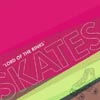 People who can't rap shouldn't and programmers with some degree of ability shouldn't bother enlisting those tired vocalists when they aren't needed. Point in case: Todd Drootin of Books on Tape makes some mildly entertaining, low-end electronic fuzz dependent on bass and drums and then decides that it must be too boring to stand alone.
People who can't rap shouldn't and programmers with some degree of ability shouldn't bother enlisting those tired vocalists when they aren't needed. Point in case: Todd Drootin of Books on Tape makes some mildly entertaining, low-end electronic fuzz dependent on bass and drums and then decides that it must be too boring to stand alone.
Melissa Dungan enters this scene and proceeds to rap like a 12 year old girl obsessed with coming off as "old school." It's a truly sad scenario of adolescent proportions until Dungan stops rapping and starts singing some reasonably tolerable lines variously concerned with such topics as Donnie Darko and shoes of different colors. The EP is five tracks plus five remixes; one remix is provided for each original track. The Master Cylinder remix of "Chartreuse" is actually quite good and is worth a few listens or perhaps it could serve as a nice addition to a mix CD for long, relaxing drives. While there are plenty of groove-filled rhythms pulsing through most of these tracks, the vocals always end up cutting through them like a chainsaw to bobbing rolls of fat. It's messy and irritating because those rolls of fat are mesmerizing and fun to watch while they last. Eventually the remixes stand out and above the original tracks, but only because the lyrics are buried deeper in the mix and because the remixes aren't trying hard to be surprising. They simply move along at their own pace and provide a continuous mood and steady rhythm. There's nothing but standard fare going on here; the price is pretty nice for a ten song EP, but it's depressing that only two or three of those ten songs are worth paying attention to.
samples:
Read More
- Administrator
- Albums and Singles
 There are warm tones bubbling up and over thesurface of this ocean and the water's rhythm provides nothing but asoothing cushion of air on which to relax. Over the course of the firstfive tracks this same feeling is reproduced in slightly varying ways:guitars stretch and crack, pseudo-pianos jumble against each other, andfairly straight-forward guitar solos dominate the mix of electronicpercolation. Sadly this is all the album has to offer; one completerotation through this record reveals a monotonous production that neverallows any of the synthetic strings to stand out as anything more thanpassing scenery: listening to this record is much like trying to catchall of the details in the trees on the side of the road while passingthem by at one-hundred miles per hour. It isn't as though the music ismoving by too quickly, but all the sounds end up blurring together inan unsatisfying way. There are exceptionally beautiful moments on someof the songs, but it is as if they are predictably beautiful. MarkusReuter and Ian Boddy can sequence and orchestrate music quite well, butthey limit themselves far too severely to produce more than one or twotruly engaging tracks. This kind of shimmering music feels as if it isstuck in time, undeniably in the late 1980s or early 1990s. Instead oftrying to escape from song structures that have long been worked out byother musicians, Reuter and Boddy both revel in sounds and structuresof a tired genre with a vague hope of making them sound moreinteresting.
There are warm tones bubbling up and over thesurface of this ocean and the water's rhythm provides nothing but asoothing cushion of air on which to relax. Over the course of the firstfive tracks this same feeling is reproduced in slightly varying ways:guitars stretch and crack, pseudo-pianos jumble against each other, andfairly straight-forward guitar solos dominate the mix of electronicpercolation. Sadly this is all the album has to offer; one completerotation through this record reveals a monotonous production that neverallows any of the synthetic strings to stand out as anything more thanpassing scenery: listening to this record is much like trying to catchall of the details in the trees on the side of the road while passingthem by at one-hundred miles per hour. It isn't as though the music ismoving by too quickly, but all the sounds end up blurring together inan unsatisfying way. There are exceptionally beautiful moments on someof the songs, but it is as if they are predictably beautiful. MarkusReuter and Ian Boddy can sequence and orchestrate music quite well, butthey limit themselves far too severely to produce more than one or twotruly engaging tracks. This kind of shimmering music feels as if it isstuck in time, undeniably in the late 1980s or early 1990s. Instead oftrying to escape from song structures that have long been worked out byother musicians, Reuter and Boddy both revel in sounds and structuresof a tired genre with a vague hope of making them sound moreinteresting.Read More
- Administrator
- Albums and Singles
 The album picks up where2003's The Rose left off: piano-soaked melodies almost completely void of the electronic beats and rhythms that made his 2001 debut Infinite Love Songs so infectious. This is where the problem lies, however. With Infinite Love Songs,Hecker was not only powerful in his originality, but he authored somepowerful songs that linger long after they're over. The problem thatplagues Lady Sleep is similar to The Rose: the lyricsare a tad too timid and moderately obscure, almost completelyincomprehensible at times, uncatchy and forgettable; and without thedaring rhythms and beats of the first album, as a whole, the album isdangerously bordering on completely miserable. Furthermore, Hecker'soriginality seems to be slipping too: songs like "Lady Sleep," andespecially "Dying," painfully echo Sigur Ros while on "Yeah, EventuallyShe Goes," the album's only track that choses to (almost) rock, Heckeris plainly resurrecting Radiohead's "Creep." Perhaps Hecker is tryingto find some hit power for his formula, and although I can give himsome mad props for the stunning piano and string arrangements,everything else is far too bland and disposable. Perhaps it's time fora remix album to add some color back into his palette.
The album picks up where2003's The Rose left off: piano-soaked melodies almost completely void of the electronic beats and rhythms that made his 2001 debut Infinite Love Songs so infectious. This is where the problem lies, however. With Infinite Love Songs,Hecker was not only powerful in his originality, but he authored somepowerful songs that linger long after they're over. The problem thatplagues Lady Sleep is similar to The Rose: the lyricsare a tad too timid and moderately obscure, almost completelyincomprehensible at times, uncatchy and forgettable; and without thedaring rhythms and beats of the first album, as a whole, the album isdangerously bordering on completely miserable. Furthermore, Hecker'soriginality seems to be slipping too: songs like "Lady Sleep," andespecially "Dying," painfully echo Sigur Ros while on "Yeah, EventuallyShe Goes," the album's only track that choses to (almost) rock, Heckeris plainly resurrecting Radiohead's "Creep." Perhaps Hecker is tryingto find some hit power for his formula, and although I can give himsome mad props for the stunning piano and string arrangements,everything else is far too bland and disposable. Perhaps it's time fora remix album to add some color back into his palette.samples:
Read More
- Administrator
- Albums and Singles
 It's difficult for a band with ten years and a solid reputation of having a signature sound to take a bold step without feeling the repercussions. While The Great Destroyer is shockingly different for a Low album, rest assured that all the elements people have grown to love are still in the mix. The first three songs rush the album in with a fierce tempo—much faster than what Low are expected to do—and layered fuzzy organs and chunky guitars over thumping rhythm lines and buried acoustic guitars.
It's difficult for a band with ten years and a solid reputation of having a signature sound to take a bold step without feeling the repercussions. While The Great Destroyer is shockingly different for a Low album, rest assured that all the elements people have grown to love are still in the mix. The first three songs rush the album in with a fierce tempo—much faster than what Low are expected to do—and layered fuzzy organs and chunky guitars over thumping rhythm lines and buried acoustic guitars.
Songs like "California" and "Everybody's Song" are instantaneously catchy, and it doesn't take many listens to easily sing along. Finding a cool comfort in a quieter approach are songs like the haunting re-recorded "Silver Rider," originally released on the "Murderer" single, and "Cue the Strings," which could easily be a nod to the Secret Name version of "Will the Night" with its use of (no surprise here) strings. Towards the end, the album lightens up with two fictitious autobiographies, "When I Go Deaf," where Alan sings about all the benefits of going deaf, and "Death of a Salesman," where he faces the doubts that nearly all musicians have at one point in their life.
Low have done a complete 180 degree turn on The Great Destroyer, as their deeper subjects tackled are the loudest rock tunes and the sillier lighter things are the quiet, slower numbers. The biggest criticism people have been giving (and all it takes is a few web searches or to be signed up on an email list to witness) has been "this isn't the Low I love." As music listeners, we're all guilty to some degree of taking a certain "ownership" of music, especially when it isn't multi-platinum hitmakers that everybody in your family or office knows. (Oh, that's "Jon" music they say around me, and I'm sure many people reading this have had the same thing happen at the home or office.) My criticism isn't with the musical choices the band took, as Low still sincerely dedicate themselves to perfection within the pop/rock framework, but with the production. Dave Fridman, the overrated knob twiddler for Flaming Lips who nerdy hipsters drool over, has seemed to fail to keep up with Low's enthusiasm. Layers of distorted guitars and beefed up drums get out of hand and sound like they're clipping at overdriven levels. If they wanted to sound amateurishly distorted, then they've done a good job, but there are moments on the album that sound way too accidentally muddy. Regardless, this is an album that I have grown a great fondness for in the short time I've been listening.
It's not entirely unexpected from Low, but it's easy to see that executed in such a bold contrast to their trademark can go either way: treasure or trash. This album is an elephant in the livingroom and people will undoubtedly have a hard time getting around it without an opinion.
samples:
Read More
- Administrator
- Albums and Singles
 Cover artwork is collected froma few of Steve's own personal favorite paintings for the original cover(all were different on the original 1987 issue) and the overall designechoes what has worked for Nurse in the past. Although all the musichas been released before (both on LP and various CDs), everything iscurrently out of print. This is the first time all the songs have beenreunited on a CD, and it sounds wonderful. Tracks were originallygathered from cassette-only releases, compilations, a live bit, andother odds and ends. All have been remastered and sound more vibrantthan ever, from the nasty organ through piano banging on the opening"Mourning Smile" (which probably shouldn't have gone on the CD releaseof Spiral Insanato begin with), to the shrieking banshee noises on "Sheela-Na-Gig," andthe dying manatee sounds on "Astral Dustbin Dirge," which mostdefinitely shouldn't have gone on the CD issue of Homotopy to Marie."Swamp Rat," although it's rarely a popular song with existing fans,undeniably has the elements that fans fell in love with NWW for: aconstant pulse (even if it is a cheesy drum machine in this case), anoccasionally repeated sample, a drone of some sort, and someunconventional instrument playing over it. Even the least intoxicatingsongs never got boring. While a lot of musicians and distributors andfans think the collapse of World Serpent was a bleak moment, I lookforward to more classy reissues like this with the delicate time andenergy invested into restoring a original running order and remasteringrecordings with the finesse that somebody like Colin Potter possesses.
Cover artwork is collected froma few of Steve's own personal favorite paintings for the original cover(all were different on the original 1987 issue) and the overall designechoes what has worked for Nurse in the past. Although all the musichas been released before (both on LP and various CDs), everything iscurrently out of print. This is the first time all the songs have beenreunited on a CD, and it sounds wonderful. Tracks were originallygathered from cassette-only releases, compilations, a live bit, andother odds and ends. All have been remastered and sound more vibrantthan ever, from the nasty organ through piano banging on the opening"Mourning Smile" (which probably shouldn't have gone on the CD releaseof Spiral Insanato begin with), to the shrieking banshee noises on "Sheela-Na-Gig," andthe dying manatee sounds on "Astral Dustbin Dirge," which mostdefinitely shouldn't have gone on the CD issue of Homotopy to Marie."Swamp Rat," although it's rarely a popular song with existing fans,undeniably has the elements that fans fell in love with NWW for: aconstant pulse (even if it is a cheesy drum machine in this case), anoccasionally repeated sample, a drone of some sort, and someunconventional instrument playing over it. Even the least intoxicatingsongs never got boring. While a lot of musicians and distributors andfans think the collapse of World Serpent was a bleak moment, I lookforward to more classy reissues like this with the delicate time andenergy invested into restoring a original running order and remasteringrecordings with the finesse that somebody like Colin Potter possesses.samples:
Read More

